According to You: Your best roadside-repair stories
I had a feeling the Hagerty Community would come through in a big way for this question: Collectively, we have likely covered millions of miles in older vehicles on highways and interstates, and there’s a good chance we did many of these miles in a neglected vehicle of questionable repute. My feelings were validated, as you folks did not disappoint.
The stories you told were beyond entertaining and many were downright insightful! While I have included some of the highlights below, do yourself a favor and read all of the replies on the original thread, published here.
Replies have been lightly edited for length and clarity. —SM
Mother Nature beats Autozone
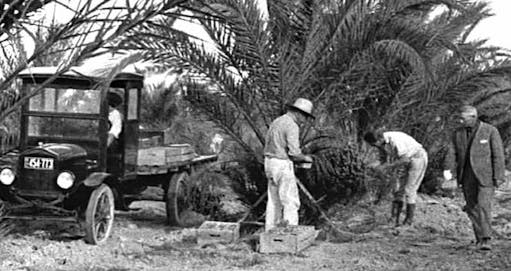
@cazinpa: I had a YJ Jeep Wrangler and had recently been working on it. I must have forgotten to tighten the distributor cap, and it came loose and broke the rotor—which would no longer stay in place (rotationally). This was before the days of cell phones, and I was stuck out in the country at night. I was able to rig it well enough to get it to stay in place by jamming a twig between the rotor and its shaft.
@TT: It was about a girl. In the late 1970s I was driving the 1964 Rambler Classic—which my father left me when he died—about 400 miles north of the city to visit my girlfriend. It was late in the day and the road was relatively deserted as it twisted through Canadian forests and countryside.
Suddenly the car overheated. Upon examination, I discovered it had taken a stone through the radiator and was leaking quite badly. Of course, being a teenager I had none of the provisions, money, or tools I would carry today. Many miles from civilization, I had no clue how to fix a car and couldn’t reach out for help. I knew enough that I knew I had to plug the hole somehow at the very least to have a chance. So I decided to break a dead branch from the woods into shorter pieces. I then took a piece about the right size with a pointy end, wrapped a piece of cloth around the point, and jammed it into the space between the front grille and the radiator with the pointy end in the hole. I hammered it into place with a rock. Luckily the grille in those days was relatively strong. I then found some water in a ditch, fashioned a scoop from something, and filled the radiator as best I could.
The solution took a while but it worked. It worked so well that I was able to drive the final 100 miles to my girlfriend without stopping. Then at the end of the weekend, I drove 400 miles back to the city. In fact, my makeshift fix worked so well that I continued driving around the city with the stick still in place for another two or three weeks, occasionally adding some water, until I could get repairs organized.
Tires, they are a-changing
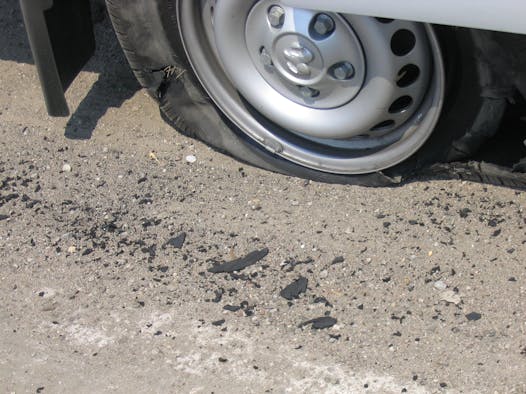
@MRD: I was working for the Rockefeller Foundation in Central Java and borrowed the company’s old Toyota Land Cruiser to take my visiting folks to see a picturesque but remote part of the coast. Had a flat, no AAA to call. The rudimentary jack would not lift the truck enough to remove/replace the wheel. Some local villagers watched the proceedings for a while and then asked why we were trying to lift the truck instead of digging a hole underneath the wheel! Which we then did and went our merry way. Good example of the benefits of looking at a problem through different eyes.
@Harry: Sometime in the past, I don’t remember the exact date, I was driving with my wife in her 2016 Mazda3 hatchback. This car had the very low-profile sport tires and, although the car was only two years old, one of them was flattened after driving over a major pothole. We limped to the nearest gas station and, although it was closed, had an appropriate place to change the tire. So, having changed many a tire in my day (I was in my late 60s at the time) I found the spare tire and jack and started the not-so-easy task of jacking the car. I had the help of my stepdaughter who had her own ideas about where and how to place the jack. As most of you know already, every car maker has their own custom scissor jack—or, at least, it seems that way.
I began jacking the car and once the wheel was off the ground, I began loosening the lug nuts. Yes, you’re right, I should have done that before I jacked the car. That was mistake number two. As I was jacking, the jack slipped because I had also made mistake number one, not setting the parking brake. Obviously, it had been a while since my last tire change and I had forgotten some very important fundamentals!
Well, the car came down on my pinky finger and was now jammed between the tire and the wheel well. Remarkably, I felt no pain, only pressure. I was sure that I was in shock and had badly injured my finger. Fortunately, there was another couple, who also had a flat tire from the same pothole, there at the gas station. That couple and my stepdaughter lifted the car high enough to free my finger. While this was happening, my wife was busy calling 911. The police came and the rescue squad shortly thereafter. Oh, by the way, my finger was undamaged! Apparently, the soft tire sans air pressure and the flexible wheel well saved my digit. Needless to say, my wife called AAA to change the tire. The rescue workers were amazed that I had not been injured!
Broken brakes
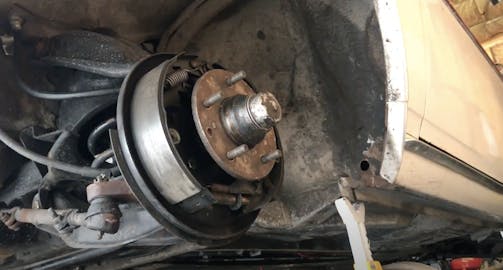
@Bob: Driving my ’49 two-door Chevy through Pennsylvania from Wilkes-Barre to Macungie, with the family down the turnpike, northeast extension. Noise coming from the rear left brake. Pulled into the Howard-Johnson rest stop and pulled the brake drum. All done on a bumper jack with tire under the frame. (I know, but it’s all I had.) Turns out one of the brake shoe hold-down clips had fallen off and was bouncing around inside the drum. Of course, it was ground up, but it had done no damage to the shoes. Found a paper clip that made a fine temporary repair. Could you do that today on a newer car?
Randy: I had a well-used mid-’70s Jeep Cherokee that looked pretty nice but was a bit overly rusted on the underside. Headed home on a four-hour drive after a long day of work. Running about 70 mph northbound on I-95 near Fredericksburg, Virginia, at around 1 a.m. with basically nobody else on the road. All of a sudden, boom! The left rear slammed down hard. I eased off the speed without braking and moved across four lanes to the right shoulder. Got out and, as I figured, no rear wheel—and not surprisingly, no lug bolts.
Analyzing the situation, I guessed that the wheel probably went about as far as I did, so I went to look along the left lane. There it was, behind the guardrail and down the bank in the median. I jacked up each corner, and pulled the wheel and brake drum to steal one lug bolt and nut. When I removed the brake drum on the corner with the missing wheel, the drum had a bit of a flat spot and all the brake parts came raining out: The retainers for the shoes had disintegrated. So I replaced three of the broken lug bolts in an appropriate triangle configuration.
Now, to the brakes. I walked to the top of the hill where the inevitable deer fence lived and used my pliers to cut a couple pieces of wire. Back at the brake, I reassembled the shoes and springs, fashioning shoe retainers from the fence wire. I was able to get the slightly bent drum back on along with the wheel. The brake pedal felt adequate so I packed up and slowly headed off. The rear brake made a pulsating effort to stop and go but relented over time and allowed me a maximum speed of about 45. The repair had taken just over an hour and after another hour and a half of driving, I was home in bed. Quite the epic, but an overall success. I suppose I’m not one to call a tow truck if an alternative presents itself!
Tricks for fluid retention
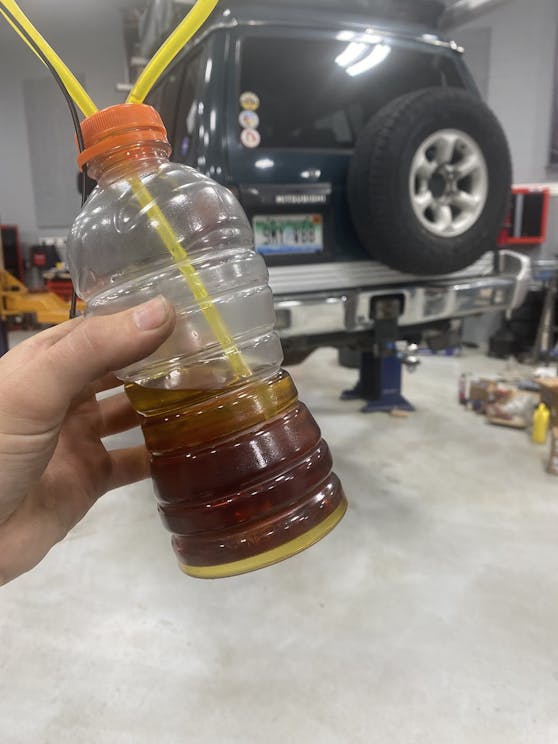
@George: For me, fall trips to the Upper Peninsula in Michigan are a required annual road trip. My friend Danny had a 4-year-old Dodge panel van that was designated as the ride one particular year, but he was not known for keeping a maintenance schedule on his vehicles. About 40 miles in, the transmission starts slipping severely. He said the convertor seal has been leaking … now he tells us!
We went off the first exit to the parts store for two gallons of transmission fluid, a hammer, a funnel, and some rubber hose. We broke a hole through the engine cover at the ash tray, installed the funnel in the hole with the rubber hose connected to the dipstick tube, and drove down the road, pouring in transmission fluid, until the slipping stopped. We made the whole trip and a further six months before Danny had the seal fixed without burning up the transmission. It is unknown how many gallons of fluid he poured through that funnel.
@Dean: My good friend had a 1970 Chevy van with a 350 V-8 engine that stopped running about 5 miles from his house. We did a little diagnostics and confirmed we were not getting fuel to the carb. We did have a 5-gallon gas can and it was full of fuel. We also had a milk jug. So we filled up the milk jug with gas, removed the van’s dog house and air cleaner, and I held the jug over the carb. I then poked a hole in the bottom of the jug so the fuel would run out of it and into the carb. We made it all the way back with no issue, but the van’s drivability was not great. Sometimes you have to do what you have to do!
@Doug: Years ago my brother was driving home from a remote oil rig at -40 degrees. The propane fuel on his truck froze up, so he was stranded in the middle of nowhere. He emptied the windshield washer bottle and filled it with gasoline, then stuck the washer hose into the carb. He managed to make it to safety by squirting gas into the carb.
Alternate endings for alternators
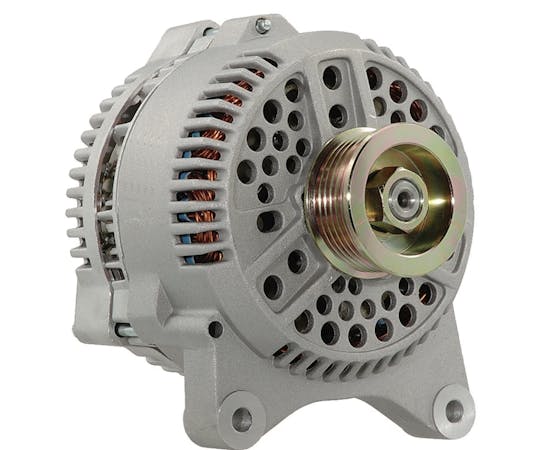
@Binksman: A few years ago on Christmas Eve, I was driving a few hours away in the wife’s Jeep Grand Cherokee. I had already done a lot of work on this Jeep including swapping engines, and I had a pile of spare parts in the shed. An hour and a half away from home I noticed the interior lights were dim. Sure enough, the engine would not turn over. It was the alternator. Absolutely no one was willing to bring me the alternator in my shed. The gas station attendant told me there was a parts store down the street, but they were not sure the store was open. The rest period was long enough for the low battery to start the engine, so I zipped down the street.
One mile later, now with no lights, I parked in front of the store. The staff was clearly closing, but they had an alternator. It turned out I had a warranty on the alternator that was in my shed (that the shop honored anyway), and the guys were nice enough to let me use tools from their work cart so I could swap it out. With five minutes until closing, I got it swapped and started, returned their tools, thanked them for the Christmas gift, and went on my way.
@Dave: In August 1974 my wife and I were on our way to Colorado from Illinois when we got within sight of Pikes Peak. I pulled our 1971 Fiat 850 Spider onto the shoulder to get out for a picture. When I went to start the car after the picture, it wouldn’t start—the starter clicked, but the engine wouldn’t turn. I assumed the starter went bad so, with my wife not having any experience with popping the clutch to start it, I had her push. When I popped the clutch, the tires just squeaked—no engine motion.
I took a better look at it and determined the alternator was seized. On the Fiat 850, the alternator was driven by a belt off the crankshaft pulley—the alternator pulley was double grooved and had a second belt that drove the water pump and radiator fan that sat to the right of the engine. So if I just pulled the belt off the alternator, I’d lose the water pump. Fortunately, I had a good tool kit and was able to get the nut off the alternator shaft and remove the pulley. Lucky for me, the alternator pulley was keyed to the shaft with a woodruff key, which I removed. I had some STP in a bottle so I lubed up the pulley and put it back on the shaft without the key and put the belts back on. The engine started with no trouble, since the battery was fully charged. Off we went the 20-or-so miles to Colorado Springs and were fortunate to find a Fiat dealer who had a rebuilt alternator and a new pulley; the old pulley now had a big oversize shaft hole but it did the job. We were back on the road before dark; the little Fiat got us into the Rockies for a memorable honeymoon.
Marriage made on asphalt?
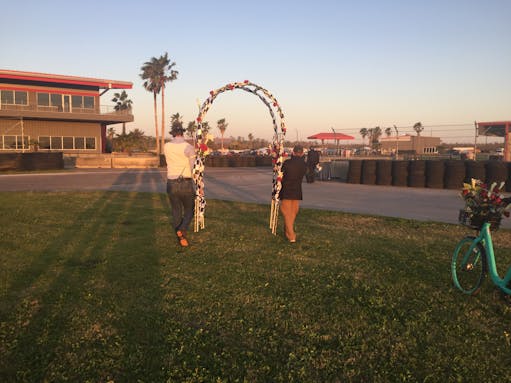
@Gary: Many years ago, when my late wife Dorothy and I were first dating, we did a drive to Whistler, British Columbia, in my 1975 Chevy Blazer. On the way back, I heard a slight bang and then some rattling. Having had a similar experience with 350 V-8s of that era, I knew a rocker arm had failed. I got out the tools in the truck, took off the valve cover, removed the companion rocker arm and both push rods. Then we limped home on seven cylinders. She was so impressed … probably part of the reason she agreed to marry me!
@Rusty: It starts with a 1965 Dodge Coronet station wagon that I bought in 1978 for $75. What could go wrong? One warm spring day I thought it would be a good idea to pick up my girlfriend in Brooklyn, New York, and take a drive to Cape Cod, Massachusetts for a few days of camping. (My outdoor-survival and all-around-woodsman skills would no doubt impress this young city girl.) Three blown retread tires later, we’re still clanking up to the Cape when a deluge of hot antifreeze starts pouring into the car from under the dash. Pulled over, popped the hood, and went to work rerouting the hoses back into the block, bypassing the heater core that was no doubt the cause of my boiled foot.
We finally made it to Nickerson State Forest, where I couldn’t start a fire, set the tent up wrong, dropped the thermos of cocoa (they were lined with glass back then), and discovered that the woods in Cape Cod were a heck of a lot colder than the streets of New York that time of year. But I guess my girlfriend was awed enough by my ability to get that rolling bucket of trouble to make the round trip, that she consented to marry me some 40 years ago. (My wedding vow included a few words about never going camping again, but still!) All in all, that’s not a bad return on my 75 bucks.
Hitting it off

@Tim: In the early ’80s we graduated from our ’72 Pinto wagon to a ’74 Volvo 145 wagon in bright orange: Mechanical fuel injection got 20 mpg city/30 mpg highway in air-conditioned bliss, and the car carried anything! But one afternoon, driving home on a regular visit to Tucumcari from Albuquerque, the car quit running. After coasting for a couple of miles, I got out to troubleshoot. There was plenty of gas, a good battery, plenty of spark, but I couldn’t hear the fuel pump when the wife tried to start the car. Something in my head said, “When an electric motor doesn’t run, whack it.” (I had raced slot cars back in the day.) I grabbed a handy roadside rock, told my wife to crank the engine, tapped the pump, and presto: It started!
I jumped back in, broke the speed limit, and held on until it quit again, and we coasted on the shoulder for as long as the orange Volvo “pumpkin” would roll, all to the delight of my 5- and 7-year-old kids! This procedure/repair was repeated six or seven more times with the last run getting us from the freeway to our driveway. It turns out to be a common pump problem, as one terminal of the commutator will come apart when the fuel pressure builds and the pump stops. And if the commutator stops on that bad spot it won’t restart when asked!
Unexpected parts and labor

@Rick: In 1976 a friend and I drove my 1968 VW Bus from Los Angeles to Montreal for the ’76 Olympics. After the games were over, we drove back across Canada. While driving through Saskatchewan in the middle of nowhere, the bus suddenly dies. We pull over, take off the bike racks (which was actually a big pain), and open the engine hatch. Turns out there was an idle shut-off valve on the side of the carburetor. It had wiggled its way loose, landing on the engine and shorting out the ignition system. It would have been an easy fix, except that when the valve came loose, it started jiggling in place, eventually making the round opening into which it screwed an oblong shape. The unit would no longer fit! Eventually, we figured out that, if we just plugged the hole, the engine would run. So we put a rubber bicycle-tire patch over the hole and wrapped electrical tape around the carburetor to keep it in place. Not only did it work, but we drove the rest of the way across Canada and down the entire west coast back to LA. Thank goodness for tire patches!
@Thomas: It was the early 1970s. My sister-in-law had a brand new Triumph GT6. She had just left our house when we got a call. The car had just quit. It would crank, but not start. The fuel line from pump to carbs somehow had a hole in it and was pouring fuel on the block. I stood there and scratched my head. I took one of the windshield wiper hoses attached it to the pump and then the carb inlet. I twisted two of her hairpins on each end with a pair of pliers. She drove home from there, about twenty miles. She said she called her mechanic the next day and explained the problem. He said he would send a tow truck. She said not to bother; she’d drive it over. She said that, when she got there, he just stood and stared at the repair for about five minutes, shaking his head!
@Pete: My first car was a ’66 VW Bug. Lots of interesting repairs, but one I’ll never forget: On my way home one evening, the gas pedal suddenly dropped all the way to the floor, and the engine dropped to idle. I coasted to the side of the road, about 8 miles from town. When I pulled on the pedal, the cable seemed very loose. Opening the hood, I saw that the ball on the end of the cable (which attached to the throttle arm on the carb) had broken off and was missing. I pulled the shoelace from one of my sneakers, tied it to the cable, and then to the throttle arm. Drove it that way for a few weeks until I had the cash for a new cable.
@David: I’ve got a hundred roadside repair stories, and this one happened during spring break of my senior year in high school. My friend and I decided we would take his ’68 Fairlane because it was newer and bigger than my ’67 Mustang. At the time, it was about an eight-hour trip from Nashville, Tennesee to Panama City, Florida (this was before you could take interstates all the way there). It was over 90 degrees and we were on a two-lane road in the middle of Nowhere, Alabama when the belt shredded and we started overheating.
Luckily, we found his old Boy Scout belt in the trunk—you know, the army-green one made out of some kind of woven cloth … We removed the buckle and managed to tie it around the three pulleys tight enough that it stayed. We limped on until we came to a gas station that sold belts a few miles later. Bought the belt, installed it, and had a crazy good time on the beaches of Panama City like only two 18-year-olds on their first unsupervised road trip could.
@Al: My 15-year-old son was staying with my sister 500 miles away at the end of the school year. I then found out he started summer school in two days. I figured my 1985 Isuzu Trooper would be a comfortable ride for what was going to be a one-day marathon drive. The Trooper ran well but had a slow oil leak. The first leg was uneventful, and once I arrived at my sister’s place I rested for an hour before loading up my son and heading home.
Once we were on the road, I stopped to top off the oil. On the Trooper, Isuzu had a rubber stopper for the oil fill on top of the valve cover. Back on the road again, we were about fifty miles down the road when the oil light came on and smoke began rolling out from under the hood. Pulling into a wide spot on the side of the road, I lifted the hood to find out the rubber oil filler plug was missing. I forgot to put it on after topping off! Down the road was a truck stop, so I thought maybe I would get lucky and find something that would replace the missing plug. The only thing I found was a Harley Davidson beer Koozie. I rolled it up, stuffed it in the hole, and completed the trip—all in one day.
Getting shafted
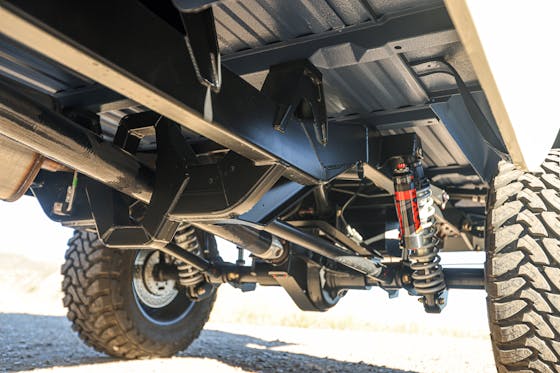
@Gary: Back in the late ’80s I had a 1970 Ford F-250 4X4. Driving home one day, one of the rear driveshaft U-joints decided to let go. Since I was only about 10 or 15 miles from home, I got out and took a look. I took the rear shaft completely off and tossed it in the truck bed. Then I locked the front hubs, put the transfer case in 4-high, and drove home. (I bet that’s been done a million times.)
Marvelous motor swap

@Brian: Quite a few years back a friend and I left Chicago for Minnesota in my ’66 VW Beetle. I knew the engine was a bit tired, but I had just adjusted the valves, re-jetted the carb to run cooler, and I wasn’t going to push it. About three hours out, somewhere near Madison, Wisconsin, the engine let loose. We towed it to the nearest repair shop, which was actually a VW dealer. They took it into the shop and confirmed the motor was toast, then quoted around $1000 to rebuild it. Not the kind of money this 21-year-old wanted to put into a $1500 car. We were leaving the dealer, feeling totally dejected, when one of the mechanics followed us into the parking lot and offered to sell me a good running motor for $100! All we had to do was pull it out of his old ’60 VW Bus and swap it into my Beetle.
We bummed around for an hour ’til he got off work, then he drove us to his house where we could drive the old Bus to proof the motor. It seemed to run OK, so I agreed to the price and my motor as an exchange. He provided the tools and we went to work. No sooner than we started pulling the bus motor, the skies opened up into a torrential downpour! Working through the rain, we had his motor swapped in about an hour and left mine on an old pallet. A couple of tweaks, and she fired right up. We made it to Minneapolis and home a few days later, without a hitch. That motor was still running great when I sold the car over a year later. I will never forget this guy’s generosity, and the kind of fellowship that old air-cooled guys continue to share all these years later.
Junkyard dogs aren’t your BFF
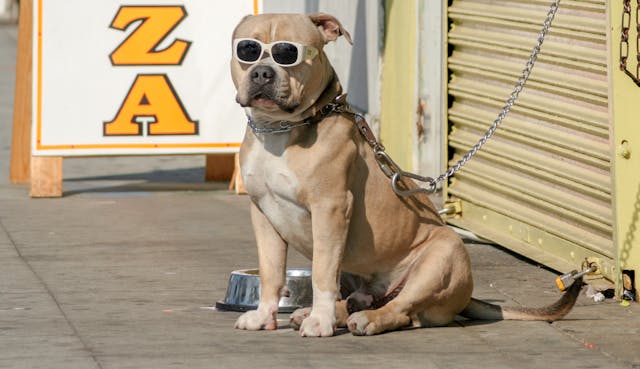
@Gary: Many years ago on a run to St. Jovite, home of the Le Circuit Mt. Tremblant, the tandem axle trailer carrying my race-ready MGB seized a wheel bearing. I went onto the shoulder to effect a repair, when I noticed a wrecking/scrap yard only a few meters from the stranded trailer. I nominated myself to stay with the rig and send my crew off to find a tire, so I had a bit of time to kill. I’ve have always liked to roam around wrecking yards (when that was still possible) so I headed towards the entrance. I got maybe a few yards in when I heard the sound of a chain unraveling!
Realizing that a junkyard dog was likely attached to that chain, I started to run, boosted by adrenaline. Unfortunately, not quite fast enough. The dog sunk his teeth into my backside just as it reached the end of its chain, got yanked backwards, and let go of me. I spent a lot of time standing over the next few days, except when in the race car!
***
Check out the Hagerty Media homepage so you don’t miss a single story, or better yet, bookmark it. To get our best stories delivered right to your inbox, subscribe to our newsletters.


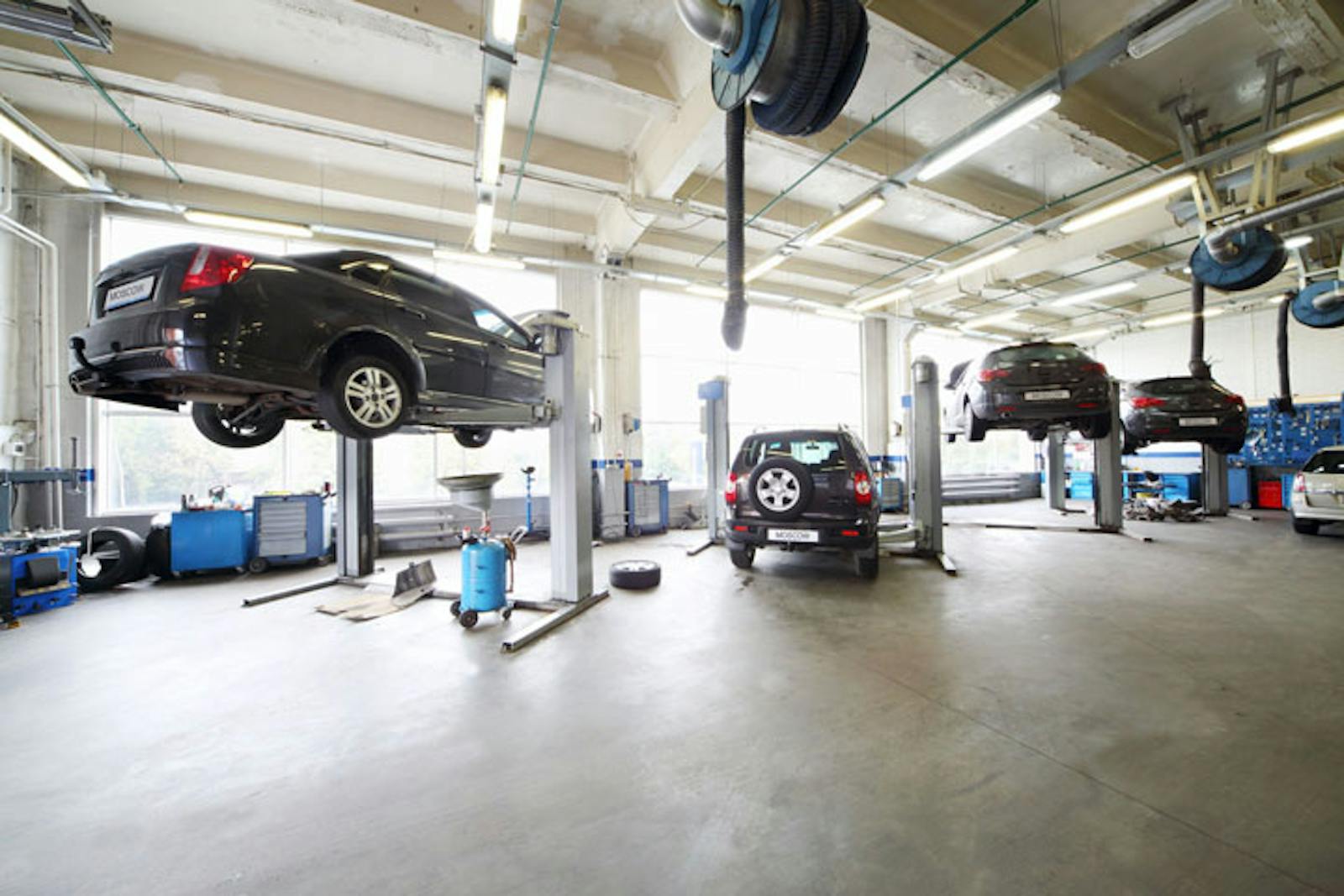
When I was in high school in the early 90s, my girlfriend and I were out driving in the country at night in my 86 Dodge Omni. Came around a blind corner and I ran over a large chunk of concrete in the middle of the road. It smashed one of the motor mounts completely, along with denting, but not piercing, the oil pan. Stuck in the middle of nowhere with of course no cell phone, I had to get creative. I had some wire coat hangers in the trunk, so I hand unwound one (didn’t have a pair of wire cutters) and then threaded it through the one remaining intact bolt hole on the smashed mount, and then wired it off to the top of the shock mount. Then did the same with another hanger to the base of the hood hinge. Managed to make it 50 miles home.
1977, my best friend and I decided we were going to drive from Venice Beach to Daytona Beach as our high school graduation “present”. We drove my mom’s 1973 Datsun 610 wagon instead of my 69 SS Chevelle. Gas was sooo expensive back then… Anyways, driving towards Baker, “Gateway to Death Valley” one of the hottest places populated places on earth, the Datsun started to overheat. Using all the knowledge a 17 year old that had auto shop all four years, I decided to plumb the windshield washer fluid tube to the radiator overflow line, no expansion/overflow tank on that Datsun. Then I filled the washer tank with ice water from the cooler. When it started to overheat, I turned on the windshield washer and that cooled it down. We had to re-fill the washer tank a few times to get to Baker. It was only 100 degrees in Baker upon arrival. Oh yeah, it was the thermostat. Replaced it in the Pep Boy’s parking lot and we made it to Daytona and back with no other issues.
“@Bob: Driving my ’49 two-door Chevy through Pennsylvania from Wilkes-Barre to Macungie …. Noise coming from the rear left brake …. the brake shoe hold-down clips had fallen off and was bouncing around inside the drum …. Found a paper clip that made a fine temporary repair. Could you do that today on a newer car?”
Could you do that today on a modern car? You probably wouldn’t have to. Drum brakes are almost extinct on new car and modern discs wouldn’t have a clip fall off.
If new cars had drum brakes with clips, the paper clip you used would still probably have more metal in it than than the modern, factory clip.
Driving home from Utah to Oregon, on a wintery day, about an 800 mile trip, 73 cougar 351C.
I did my usual ritual (buying beer in Idaho) drinking age was 18 there and 21 where I live.
Grabbed several cases of the forbidden nectar, stuffed in my trunk.
Made it to the middle of eastern Oregon desert, (about 2AM) I noticed watery substance on my windshield, temperature gage pinned on HOT.
Pulled over on the side of the deserted highway (nothing for hundreds of miles) pitch black, middle of the night and about 15f degrees outside, this frozen desert.
I bundled up and got out to survey the damage. With my nearly dead flashlight glow.
Broken heater hose,
Not the worst thing that could happen. I’ll survive.
I looped the good hose from the pump to the manifold, bypassing the heater.
Great, now I need liquid for coolant.
(I remembered back my grandmother kept a bucket in her post war jalopy, she’d frequently run to the creek along the road and pail up some water for her leaky radiator)
didn’t help me now, cuz everything’s ice.
I tried chipping ice from puddles, that was in vain, didn’t have to pee, where to find water?
I could hear coyotes howling from the end of the field, and getting closer.
After pondering my options over and over, (Damn, gotta use my beer)
head down I sadly opened the trunk, staring at the cases like Kurt Russell in old yeller.
I poured about a 12 pack of that Rocky mountain spring water in my radiator with a tear in my eye.
coyotes getting closer, crumpled and threw down the last can (I’m outta here.
Driving wasn’t easy, 80 mph, wearing two coats wearing gloves, had an ice scraper to remove ice from the inside of my windshield.
I was shivering soooo bad when I got to the next open town (Bend Or. -200 miles)
I staggered in a truckstop, like a Frankenstein, pointed at my car with my frozen fingers and muttered to the night cashier: “broken hose, need”)
The guy behind the counter, went out, assessd the situation, came back with 3ft of heater hose and even put everything back together with fresh coolant, only billed me $7 for everything.
I remember him pulling the hose off the engine, it chugging out that foul smelling fluid on the shop floor. “what the hell’d you put in that thing?
-Sarrow, I said, lots of sorrow.
The remaining 150 miles of the trip home were crispy warm,
I don’t think I took the heat off HIGH for the rest of the trip
My mom and I were travelling to visit the Henry Ford Museum near Detroit. We’re from Central Illinois so not a long drive>>8 hours to get there. Mom’s car was a 1983 Pontiac Bonneville wagon with 3.8 Buick V6 that was low miles. We had not had the car long as we had got it used from a local dealer. A little ways into Michigan all the dash lights came on, the engine stalled and the steam started to roll so I coasted off the side of the Interstate. Hit the key and nothing>>engine stuck tight. While sitting there, a tow truck pulled up and asked if we needed help. He was on another call and would see if we were still there on his way back. We were close to an exit. The engine cooled down enough to turn over and fortunately it restarted. Drove the mile to the exit with the temp light glaring at me. There was a service station (remember those?) just off the highway. The mechanic diagnosed it as a plugged radiator. There were junk cars out back. The car with a radiator that would fit was a LeSabre, also with a V6. It had been hit in the front but the radiator still held water. That radiator went in along with the coolant that was in the junk car as this was the time when antifreeze was expensive and he wanted to charge $8/gal. We were on our way after 4 hours and finished out our trip. Burned 4 quarts of oil and the oil pressure light flickered at idle. After we got back, a salesman called to see how we liked our ‘new’ car. I said that we blew it up last week on vacation. He said, “Oh.” and hung up. The Buick engine got tossed and a Chevy small block went in.
Driving my V8 Vega (nice practical college car, haha) from home back to college and one of the fan blades let go. It was one of those alum fans that had 6 fixed pitch blades. Fortunately the blade exited down, not hitting the hood or anything like a radiator hose or radiator on the way out. Pulled over, noting that there was a rest area about 1 mile ahead. Drove into there, and with my limited tools in the car, used wire cutters to remove the blade opposite of the missing one. Now I had a balanced fan again, and being almost all highway made the rest of the approx 200 mile trip without problem. Replaced fan once I made it back to school.
Regarding Gary (1970 Ford F-250 4X4. Driving home one day, one of the rear driveshaft U-joints decided to let go.) Yep – been there, done that to my 71F250 4wd. Also, when brake master cyliner went, I got home by downshifting (Manual Trans rule!) and using the emergency brake.
On a motorcycle trip to new england my suzuki gs550 clutch cable went – a lot of “trying not to stop” and “syncro” gear shifting the last 50 miles home. Fortunately, most of it was freeway driving.
Last September 2022 I flew out to Nova Scotia to pick up my dream car and drive it back to Ontario.
Before I left Halifax, I hit a pothole and cracked the front left rim, but the crack was before the bead so it still kept air. The car does not have a spare from the factory, the closest place to get a new rim was Montreal and they had to order it from England, which would take a week.
So I decided to drive it back anyways and take my chances. In the middle of New Brunswick, my other front right side rim got a flat tire. I used the cars factory air pump and the tire goop in a can to get me going again.
About an hour later, it was flat again, the tire goop had not sealed up properly or fast enough and the tire leaked the air out. Now the tire valve was full of the tire goop and would not take air either, and it was about 10pm in the middle of no where.
An older gentleman stopped to offer help, to my amazement, he had a new tire shradder valve at his home along with the tool to remove it and went to get it. We put the new valve in, aired up the tire and was good all the way home to Ontario!
Around 1974. I was in the military, on leave and driving home for a few days – right after getting off my ‘swing’ shift at work. Took off around midnight, for a quiet 400 mile drive, mostly on on two-lane country roads. About half-way through my journey, the headlights in my ’71 Mustang went out. Pulled to the side of the road, checked the fuse (good). I had ‘parking lights’, however no headlights.
Had some basic tools in the back, and a 50′ extension cord. Cut 10′ off the male side of the extension cord, stripping it down to the two wires and male plug. Ran the end of the wires to the low-beam connection on each headlight, squeezed the ‘plug’ ends together and wedged that onto the positive battery terminal (area where the positive clamp pinches together against the battery terminal). Worked great! Taped it all down, and drove the rest of the way home, ‘unplugging’ it from the battery on arrival.
The next day, I discovered that the headlight switch (at that time, on the dashboard) had gone bad, in the middle of my trip.
A quick trip to the Ford dealer, and got a replacement switch installed..
Labor Day weekend, 1967. We (long-suffering but incredibly patient with my car addiction) wife and I decided to visit Monterrey Mexico from Austin. In a 1959 Renault 4CV. Made it to Monterrey just fine. Then the generator light came on. Found a repair shop and exercised my Spanish explaining to the mechanic how to remove/replace the generator as he had never worked on a 4CV–fortunately they were mechanically similar to Dauphines, which were fairly common in Mexico then. Problem turned out to be worn brushes, which he promptly replaced. All was well.
Heading home up I-35 from the border, the generator light came on again, dimly, then gradually brighter. As it got dark, I discovered there were enough amps to operate either the ignition or the headlights, but not both. Still on I-35, now dark, I was on parking lights alone. On an Interstate, on Labor Day weekend, with wife holding a flashlight out the passenger window, illuminating the right side edge line so I could stay in my lane and not go off the road. It was still dark between San Antonio and Austin in 1967. Then the battery’s capacity decreased to the point where I had to turn off the parking and tail lights, leaving only the tiny side lights (used for on-street parking in Europe)–each bulb about 5 candlepower. Then one cylinder cut out, next another, and finally a third. We coasted to the side of the road, all things electrical dead. I figured the problem was the regulator, as the freshly re-brushed generator tested fine, so I jumped the terminals on the regulator, rolled downhill (I was smart enough to stop atop a hill), popped the clutch, and the engine blazed to life. I switched on the headlights, and they were dazzlingly bright, with nothing to regulate generator output voltage. We drove the final 12 miles home with everything electrical running to keep from overcharging the battery. By the time we arrived home, the battery was fully recharged.
After that adventure, I added a set of generator brushes and a voltage regulator to my travel spares kit…and never again needed ’em.
PS. We’re still married, and she’s still patient with my automotive addiction…
The fuel pump quit on the RX4 wagon but I had a 12VDC tire compressor along. Cut off the valve fitting, stuffed the hose and rags in the filler neck and continued.
Driving our ’70s Accord back from FL to St Louis after an xmas visit to the folks. Stopped for gas in TN late at night. It was freezing rain. The Accord had a gas door flap that was locked with the ignition key. With the ice and such the key broke in the the lock. So I had the Key in two pieces. Slipped the pointy end of the key into the ignition then with the back half gently slid the pieces down inside. There was one chance lest the broken piece slip beyond where it needed to be. Got lucky and the broken pieces got the steering unlocked and the car started. Didn’t touch it the rest of the way home and then promptly replaced when home in STL. Guess that’s why you don’t see this design anymore….
In the late 1960s, our family took a road trip from our home in northern Delaware to my grandparents’ home in the Ozark mountains of Missouri. We were traveling in my Dad’s shiny black 1967 Ford Country Squire wagon, towing our 19 foot Monitor travel trailer. Somewhere in Ohio or Indiana, as I recall, we hit a big sharp dip in the road surface on the interstate, and the jolt caused the Ford’s rusted exhaust pipe to break off a few inches before the inlet to the muffler. After a quick stop on the side of the road to have a look, we proceeded on to the next town to try to make repairs. This was on a Sunday, and there were no shops open in this small town who could actually repair the exhaust system. So Dad (an engineer) and I (a future engineer) improvised a temporary repair. Dad always had a small tool kit in the car for emergencies, and it really came in handy. We took a steel Campbell’s soup can, cut the top and bottom out of it using Mom’s can opener, slit it open lengthwise using a hacksaw, and I scooched under the car and slipped it over the exhaust pipe. The local filling station sold us two new muffler clamps. Using the hacksaw, I removed the old rusted muffler clamp. I then slid the soup can into place, squeezed it into shape around the exhaust pipe as tightly as I cold, and clamped it into place with the two new clamps. Voila! We had a workable repair that lasted the rest of the road trip! And the cost was next to nothing! Yes, it leaked a bit, but it got us by!
I did a repair just like this on my 71 MGB last summer and covered it over with ceramic fiber exhaust wrap. No leaks and it still passes PA state inspection.
Back in the 80’s me and a buddy of mine were out beating around in the Midwest in his 79 Mustang pace car and we hit a nasty bump that broke the exhaust loose. The exhaust was hanging down bad and we didn’t have anything to tie it back up to keep our journey going. About the time we were going to start walking to the nearest farm house to try and find some wire a local farmer pulled up and asked us if we needed help. We told him what had happened and he graciously offered to help…like it was no big deal, he walked over to the fence and cut a piece of wire out and handed it to us. I looked at him and said “wow, you didn’t need to that!” he looked at me and said “no big deal, that’s not my fence but if were you guys I wouldn’t be hanging around too long” I’ll never forget that one:)
Some great stories here. Here is one of mine:
My first sportscar was a used ’57 Austin-Healey 100-6. Had odds & ends problems now & then. But, one day, while about 20 miles from home the engine slowed and quit. I knew it was the Lucas fuel pump because normally it made a lot of noise since it was mounted to the body right on the front of the right-hand “jump seat.” OK. So, the usual solution of banging it with a hammer didn’t work. The “jump seats” were merely padded seat-shaped metal forms that screwed to the rear platform. I removed the one from the side where the pump was located, removed the cap from the pump, detached the lever from the electric gadget that activated it and was able to pump it manually using my right hand as I drove home. The next day I replaced Lucas with a Bendix electric pump that never failed after that. After a series of MGB’s, my last one was also my racecar. The Lucas electrics were all replaced by either Bosch or Japanese. Twelve years of daily driving and racing and only one failure—the tachometer just before my last race at Watkins Glen. So, I shifted by the sound of the exhaust which was quite loud.
I was driving my Fiat 128SL up to Killington Vt. With friends for a ski weekend around 1976 when the car died on Rt.4 in Rutland. After a look under the hood, I found that the rotor had come apart and destroyed the cap. There was a Fiat dealer right down the road from where I had broke down and they sold me a cap and rotor. Back at the car I discovered that the rotor was incorrect and also found out that there were two possible rotors for that car and the local dealer didn’t have the correct one. So I called the next closest dealer in White River Junction and they had it in stock. Unfortunately it was late in the day, they closed at 5, and they were about an hour away. So luckily I was immediately picked up hitchhiking and dropped off right at the dealer with 15 minutes to spare. On my return trip, the first guy to give me a ride also had a Fiat 128SL and a 6 pack of beer. He drove me right to my car and even held the flashlight while I fixed it. Later I bought him a few rounds at the Pickle Barrel that night.